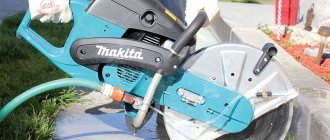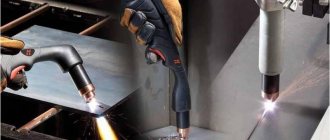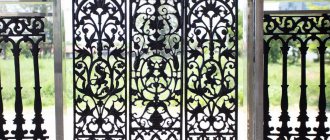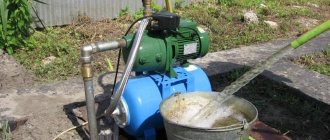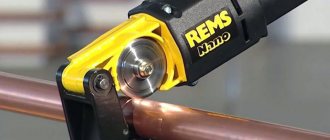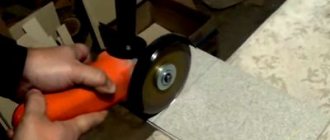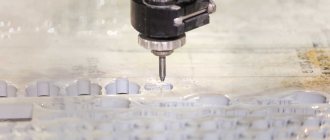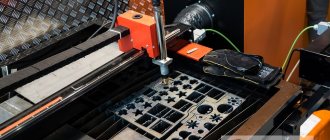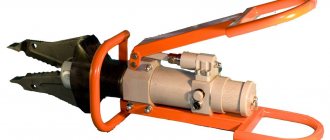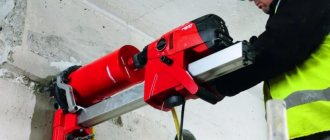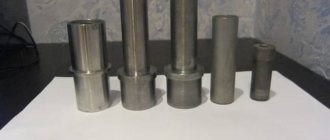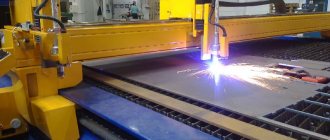In this article we will look at PTK plasma cutters, which are produced at the largest Chinese plant KINGSTRONIC. The PTK company is the exclusive supplier of MIG/TIG welding torches, CUT plasma torches and components from the KINGSTRONIC plant in Russia and the countries of the Eurasian Union.
All presented cutters in the range of branded products belong to the class of high-frequency cutters with HF ignition. Let's look at the features of each cutter, and we'll start with the most common models.
What it is?
A plasma torch is a device for generating plasma - an ionized gas with quasi-neutral properties used for processing metals. Its design uses electric current and plasma-forming gas to generate and stabilize a plasma jet.
Figure 1. Plasmatrons for hand-held devices and CNC units
Design
Structurally, plasma torches for cutting sheet metal and metal workpieces consist of the following components:
- nozzle;
- electrode;
- element for swirling the air flow (swirler);
- fluoroplastic body;
- nozzle nut;
- insulating sleeve;
- electrode assembly;
- casing
Figure 2. Standard plasma torch design
Device
Purpose of the main elements of the plasma torch:
- Nozzle – is the tip of the cutter, used to form the shape of the plasma jet. Typically made of copper, the design is determined by the type of plasma cutting machine.
Photo 3. Appearance of the nozzle
- Electrode (cathode) – used to ignite and maintain the plasma arc. It is made from refractory metal and has a zirconium or hafnium insert. Selected depending on the equipment and material being cut.
Photo 4. Appearance of the cathode
- Swirler (diffuser) - necessary to increase pressure and slow down the plasma flow during the cutting process.
Photo 5. Swirlers
Operating principle
The principle of operation of plasma torches is to supply a plasma-forming gas into the discharge chamber (here it is ionized) and to carry the plasma jet beyond the gap between the nozzle and the cathode to the surface of the metal being cut.
Figure 6. Design diagram of a water-cooled plasmatron
The plasma cutting process begins with the ignition of a pilot arc between the cathode and the nozzle as a result of applying high voltage. It serves to create the main (cutting) arc when touching a metal workpiece.
A small hole in the nozzle forms a directional plasma jet flowing at a speed of up to 3 km/second. In this case, the jet temperature reaches 5000-30000 °C. The targeted effect of plasma provides instant heating of the metal until it melts and blows it out of the cutting zone.
To obtain a part of a given size and shape, the plasma torch is directed along a specific contour. When cutting, it is important to maintain a constant gap between the material being cut and the nozzle, which allows you to obtain smooth edges with a minimum amount of slag and scale.
Photo 7. The process of cutting blanks of complex configuration using a numerically controlled machine
Scope of application, pros and cons of plasma cutting
Plasmatrons are widely used in the following industries:
- heavy engineering;
- automobile, aircraft, shipbuilding;
- metallurgy;
- metalworking factories and companies;
- enterprises and companies producing metal structures;
- construction industry.
Plasma metal cutting technology has many advantages:
- High cutting speed – 5-10 times higher compared to oxy-fuel cutting.
- Fast burning of material - the burning time of a steel sheet with a thickness of 15 mm is within 2 seconds.
- Minimum heat affected zone – eliminates the possibility of workpiece deformation, which is especially important when cutting thin sheet metal.
- Improved cut quality - the plasma jet minimizes the amount of scale and slag, so additional edge processing is usually not required.
- High precision - the minimum cutting width and the use of special automation devices make it possible to obtain workpieces with the most accurate configuration and dimensions.
- Versatility - this method is used for figured and straight cutting of steels of any grade, non-ferrous metals, as well as their alloys.
- Possibility of automation - you can buy either a manual device or a more productive CNC machine.
- Easy to maintain and operate.
Unlike air-arc cutting, where operating parameters are determined by the rate of air flow per minute and the type of gas used, the stability of the cutting process with a plasma jet and the quality of the cut depend on the correct choice of plasma-forming gas, current strength, and maintaining a constant gap between the nozzle and the material being processed.
Photo 8. The process of cutting parts with a manual plasma cutter
Arc stabilization system during plasmatron operation
Depending on the method of arc stabilization, all plasmatrons are divided into gas, water and magnetic. It must be said that the arc stabilization system is very important for the functioning of the plasma torch, because it is it that ensures compression of the column and its fixation along the axis of the electrode and nozzle.
The simplest and most common arc stabilization system is gas. Its operating principle is to cool and compress the walls of the arc column with an external, colder plasma-forming gas. The water system makes it possible to achieve a higher degree of compression and raise the temperature of the arc column to 50,000 degrees.
Plasmatrons of this type use a graphite electrode, which is fed to the extent of its combustion, since water vapor near the electrode provides an increased rate of this process. Compared to these two stabilization systems, magnetic arc stabilization is considered less effective, but its advantage is the ability to adjust the degree of compression without loss of plasma gas.
Operating procedure
Initially, you need to prepare the plasma cutter for work - depending on the type, it operates on a 220 or 360 V network. The preparation sequence is as follows:
- The device is installed in a place where there is good air access, and it should not be exposed to splashes of molten metal during operation.
- The equipment must be operated in a ventilated area equipped in accordance with fire safety regulations. The device must be protected from accidental ingress of moisture - for this purpose it is often even equipped with a moisture-oil separator to prevent them from entering the plasma torch structure, which leads to a decrease in the service life of consumables.
- It is advisable to also prepare the rolled metal to be cut - paint coating and corrosion lead to increased smoke emission, but do not affect the quality of the cut.
- Periodically it is necessary to check the integrity and cleanliness of the electrode and nozzle. The frequency depends on the intensity of use - for example, with constant operation, they may require replacement after an 8-hour work shift.
A high-quality cut without sagging and scale is possible only if the current strength is chosen correctly. It is selected taking into account the type of metal being cut and thickness. Dependence of current strength for cutting workpieces 1 mm thick from the following materials:
- Structural steel and cast iron - 4 A.
- Non-ferrous metals and their alloys – 6 A.
The cutting speed also affects the quality of the cut. It can reach 0.2-2 m/minute and depends on the thickness, type of material, and set current strength. In automated equipment, the speed is set by the program, but in a manual process, the cutter is responsible for this.
Before starting work, you need to blow out the plasmatron to remove foreign particles and condensate - to do this, press the ignition button and wait about half a minute. Then you can ignite the pilot arc; it burns for up to 2 seconds, after which the working plasma arc ignites.
An important point when plasma cutting is to maintain a constant distance between the nozzle and the metal being processed (usually 1.6-3 mm) - this affects the stability of the working arc and the quality of the cut. However, there are special guides for hand-held cutters on sale, which greatly facilitate the work process and increase productivity.
Photo 9. Guide device for maintaining a constant gap between the nozzle and the workpiece.
During operation, the cutter nozzle should be located perpendicular to the metal being cut or at a slight angle (deviation up to 10-50°) when cutting materials with a thickness of up to 25% of the maximum allowable for specific equipment. This technique will minimize the risk of deformation of thin-sheet workpieces.
Pros and cons of using plasma cutting
Plasma cutters are actively used today in construction work.
The use of such units has a number of advantages.
1. High performance. A plasma torch is more powerful than an oxygen torch. With the correct selection of the power of this device, you can increase productivity by 4–10 times. In this aspect, a plasma cutter is second only to an industrial laser machine, but this is completely covered by its cost.
From an economic point of view, a plasma cutter is beneficial when working with metal up to 60 mm thick. It is more advisable to cut thicker steel sheets using oxygen cutting.
2. Universal method. The use of this technology allows you to work with almost any type of rolled metal. The same device, at different power and air pressure settings, can process steel, aluminum, titanium, cast iron, copper and other metals. It is also convenient that cutting does not require preliminary preparation of the surface - manipulations can be carried out on rusty, painted or dirty surfaces.
3. High-precision and high-quality cutting. The resulting parts are distinguished by a smooth, “clean” edge without sagging or overheating. Almost no additional processing is required, since the cutting width of modern machines is minimal. Unlike using an autogen, the area of the metal sheet heated during cutting is several times smaller. Thanks to this, minimal thermal deformation values are achieved.
4. Technology safety. The method does not require the presence of explosive gas cylinders.
5. Economic benefits. Of course, from an economic point of view, with large production volumes, the use of plasma cutting is more justified than, for example, oxygen or mechanical. In other cases, do not forget about the labor-intensive additional processing of cut parts. For shaped cutting of a thick sheet of metal, it is possible to use an autogen, but grinding the edges after such an operation will take a lot of time.
Let us also mention the disadvantages of this technology. The key one is the relatively small cutting thickness. Even for powerful devices this figure does not exceed 100 mm. For comparison, the oxygen method allows you to pierce steel or cast iron up to 500 mm thick.
Another disadvantage of the technique is the minimum angle of deviation from the perpendicular cut. This indicator should not exceed 10–50°. The specific figure depends on the thickness of the metal sheet. If the tilt is too strong, the width of the cut will increase and, as a result, consumables will wear out faster.
Unlike the use of piece electrodes, it is almost impossible to connect two plasmatrons to one device. This is due to the complexity of the equipment design.
Types of plasma cutters
Plasma torches for plasma cutting of metals are produced in different modifications according to the type of cutting, arc ignition, and with different operating parameters.
Plasma cutters by cutting type
Based on the type of cutting, a distinction is made between manual machines and automatic CNC machines. It all depends on the work being performed and the maximum thickness of the metal being cut.
Plasma cutters for manual cutting
Plasmatrons for manual cutting are used in various industries - from small auto repair shops to industrial enterprises. The cutting process involves manually operating the cutter – i.e. The cutter independently regulates the cutting speed.
Photo 10. Manual plasma cutting
The manual cutting process does not provide as much precision and productivity as the automatic one. However, the devices are more compact, which makes them possible to transport. Inverter devices can even be carried manually, since their weight does not exceed 15-20 kg.
Plasma cutters for automatic cutting
Plasmatrons for automatic cutting differ in design - it depends on the type of equipment on which the device will be installed. The automatic cutting process is characterized by increased productivity; it is usually performed on a special table on which sheets of the metal to be cut are laid. There are also portable machines for cutting small workpieces. They are controlled by CNC (computer numerical control), which minimizes the human factor.
Photo 11. Automatic plasma cutting
Main advantages:
- high cutting speed;
- increased accuracy and quality of cut;
- automated adjustment of operating parameters (current strength, gas pressure, distance between the nozzle and the workpiece) taking into account the thickness and grade of the metal.
Plasma cutters by type of gas used
Plasmatrons work with different gases - inert, reducing, chemically active and mixtures thereof. They are selected depending on the grade of metal being processed:
- Compressed air – ferrous metals and copper up to 60 mm thick, aluminum up to 70 mm.
- Nitrogen – aluminum and copper up to 20 mm thick, low-carbon low-alloy steels up to 30 mm, with a high content of alloying elements up to 75 mm, brass up to 90 mm, titanium of unlimited thickness.
- Hydrogen nitric – copper, aluminum and their alloys up to 100 mm thick.
- A mixture based on nitrogen and argon - highly alloyed materials up to 50 mm thick.
- Argon and hydrogen – high-alloy steels, aluminum and copper alloys up to 100 mm thick.
Plasma cutters based on arc ignition type
Produced with direct and indirect action arc. A direct arc is excited as a result of the flow of electric current between the cathode (non-consumable electrode) and the anode, which is a metal workpiece. An indirect arc is ignited between the cathode and the nozzle, but such devices are used much less frequently.
Figure 12. Schemes of direct and indirect plasma torches
Plasma cutters by cooling type
Cooling of plasma torches can be of the following types:
- Water - mainly professional modifications are equipped that work continuously for a long time. The circulation of liquid in them is ensured by a special pump.
- Air – equipped with semi-professional and household models. The internal elements of the burners are cooled by the passage of compressed air or gas through the channels. Such devices have a lower duty cycle and require breaks during operation.
Types of plasmatrons for cutting metals
All existing plasmatrons are divided into three large groups:
I. Electric arc
II. High frequency
III. Combined
Electric arc plasma torches are equipped with at least one anode and cathode connected to the DC plasma torch power source. The coolant used in such devices is water, which circulates in the cooling channels.
There are the following types of electric arc plasma torches:
- Straight arc plasma torches
- Plasma torches with indirect arc (indirect plasma torches)
- Plasmatrons using an electrolytic electrode
- Plasma torches with rotating electrodes
- Plasma torches with rotating arc
High-frequency plasma torches have neither electrodes nor cathodes, because the inductive/capacitive principle is used to connect such a plasma torch to the power source. It follows from this that high-frequency plasmatrons are divided into induction and capacitive.
The operating principle of high-frequency plasma torches requires that the discharge chamber of such devices be made of non-conducting materials, and ceramics or quartz glass are usually used as such.
Since maintaining an electrodeless discharge does not require electrical contact of the plasma with the electrodes, plasmatrons of this type use gas-dynamic insulation of the walls from the plasma jet, which makes it possible to avoid their overheating and limit themselves to air cooling.
Combined plasmatrons operate under the combined action of high-frequency currents and the combustion of an arc discharge, including its compression by a magnetic field.
In addition to the general classification of plasma torches into electric-arc, high-frequency and combined, such devices can be divided into groups according to many principles: for example, depending on the type of cooling, according to the method of arc stabilization, depending on the type of electrodes or current used.
How to choose a plasma cutter?
The choice of a plasmatron for cutting metal is made according to performance characteristics, taking into account the work performed (dimensions, thickness and type of rolled metal).
Thickness of the metal being cut and current strength
The expected thickness of the metal being processed affects the rated current of the equipment - for example, to cut ferrous metal and stainless steel, 4 A of power is needed for every 1 mm of thickness. Therefore, to cut 10 mm sheet structural steel, you need to set the operating current to 40 A. At the same time, it is better to buy a plasma cutter with a small power reserve.
Duration of activation
PV or on-duration determines the time of continuous operation of the device. If the technical characteristics of a plasma cutter indicate a duty cycle of 60%, this means that out of a working cycle of 10 minutes it can operate continuously for 6 minutes. If this threshold is exceeded, overheating and failure are likely.
Recommended PV values depending on the scope of application:
- Domestic needs - 40% PV is sufficient.
- Workshops, small metalworking companies - PV 60%.
- Large factories, enterprises for the production of metal structures - PV 80-100%.
Required compressor power
The stability of the plasma cutting process directly depends on the compressor power. Therefore, the device should have 20-25% greater productivity than indicated in the plasma cutter passport. It is also desirable that it be equipped with an oil and moisture separator to eliminate the influence of condensate and impurities on the quality of the plasma.
Hosepack length
The length of the hose package can range from 1.5 to 8 or more meters, so when choosing, you need to be guided by the overall dimensions of the rolled metal with which you are supposed to work.
Video on how to choose a plasma cutter
Processing quality
The quality of the cut is an important criterion in metal processing. Especially when it comes to plasma cutting of pipes. The quality of the cut is influenced by the operating mode and qualifications of the performer. Plasma arc cutting is carried out in accordance with GOST 14792-80 and must comply with the international quality standard - ISO 9013-2002.
The documents define the main criteria:
- Tolerance for perpendicularity or angularity. It is an indicator of deviations from the perpendicular and cutting plane to the surface of the product to be processed.
- Melting of the top edge. Cracks are not allowed to appear at processing points. The upper edge may turn out sharp, melted, melted-overhanging.
- Roughness. In accordance with GOST, it can be 1, 2 or 3 classes.
Plasma cutting, in contrast to the laser cutting method, allows you to process sheet metal of large widths and cut metal sheets at a certain angle. The appearance of defects on the surface of finished products is minimized, therefore, they do not have to be subjected to additional mechanical processing.
The best plasma cutters
The PURM group of companies produces reliable devices for various purposes, designed for intensive use even in harsh climatic and production conditions:
- Manual semi-professional inverters – KEDR CUT 40 and CUT 40V
Photo 13. Inverter plasma cutter KEDR type
- Manual professional inverters – PURM-70A and PURM-120A.
Photo 14. Inverter device PURM-70A
- Manual professional transformers - from PURM-140 to PURM-400.
- Automatic CNC machines – “OPTITOME 15”, Diagonal, Vertical, Normal, Parallel, etc.
Photo 15. OPTITOME 15 CNC plasma cutting machine
Each of the plasma cutters has its own advantages and is designed for plasma cutting of metal with different thicknesses and characteristics.
← Modernization of plasma cutting machines Plasma cutting of metal: equipment →
Air plasma cutter
The working environment is prepared atmospheric air.
Used for cutting ferrous metals. It has the simplest design among analogues. A plasma torch for manual air plasma cutting is included in units operating from a 220V or 380V network. Equipped with a stop to ensure optimal distance between the cutter and the surface of the workpiece. This is done so that the operator’s hand does not get tired. Otherwise, the cut line will be uneven with significant roughness.
